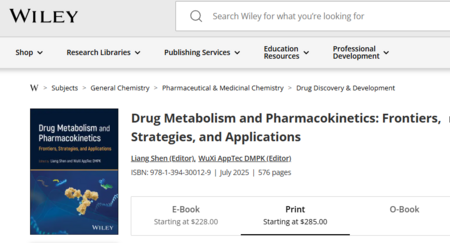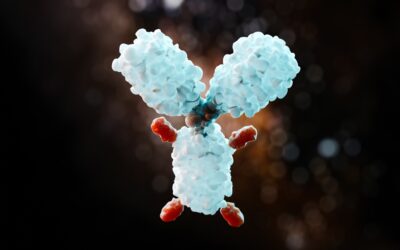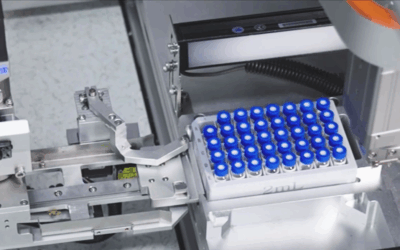The pharmaceutical industry is constantly evolving. New tools and methods are accelerating the pace of progress, facilitating efficient development of much-needed therapies. But the rise of novel drug modalities has presented challenges and opportunities and is driving continuous innovation and progress in Drug Metabolism and Pharmacokinetics (DMPK) research.
In July 2025, WuXi AppTec’s DMPK Department published a book titled “Drug Metabolism and Pharmacokinetics: Frontiers, Strategies, and Applications” with the publisher Wiley. The book merges two decades of research with practical strategies to tackle complex DMPK challenges in novel therapeutics, offering unique value to those working in preclinical drug development.
Optimized DMPK Approaches That Deliver Beyond Theory
There is no substitute for experience and hands-on knowledge, and the authors drew on expertise drawn from wide-ranging programs to address the challenges presented by novel drug modalities in a way academic textbooks struggle with.
As new drug types emerge, conventional approaches for small-molecule therapies often fall short. Regulatory guidance is limited, and developers without the required expertise in the correct fields may struggle to navigate preclinical testing. By leveraging the extensive experience of WuXi AppTec’s DMPK team, this book offers actionable strategies for the most transformative modalities.
Chapters focus on some of the most important and novel drug types that are revolutionizing the pharmaceutical industry, including:
Antibody-Drug Conjugates (ADCs): Covering DMPK characteristics and overall strategy, in vitro stability, biotransformation, drug-to-antibody ratio (DAR) value determination, and identification of payload-related metabolites.
Oligonucleotides (oligos): Considering modification and delivery systems, integrated bioanalytical platforms (LC-MS, qPCR, LBA, fluorescence), metabolite identification, and characteristics of approved siRNA and ASO drugs.
Peptides: Focusing on ADME properties of approved peptide drugs, metabolic pathways, radiolabeling techniques and applications, and overcoming bioanalytical complexities such as nonspecific binding and stability.
Proteolysis-Targeting Chimeras (PROTACs): Strategies to enhance oral bioavailability, defining soft spots and metabolites, and de-risking DDI potential.
Identifying DMPK Challenges in Targeted Therapeutic Areas
As populations age, chronic illnesses are becoming increasingly common. This creates a growing need to develop drugs tailored to different disease types. Specialized preclinical models and testing methods are required due to the distinct characteristics of drugs and conditions.
This can complicate the development process and is a key area addressed in “Drug Metabolism and Pharmacokinetics: Frontiers, Strategies, and Applications.” The book covers drugs that target traditionally challenging systems, like ophthalmic, the central nervous system (CNS), and transdermal, topical, and respiratory treatments.
WuXi AppTec called on experience from more than 1,700 IND/NDA filings and developed advanced DMPK methods and strategies for addressing complex research challenges. The book also includes comprehensive validation studies, demonstrating the precision and reproducibility of each technique.
The areas covered include:
- In vitro ADME: Specifically, RP-HPLC lipophilicity assessment, flux dialysis method for high protein-binding drugs, metabolic clearance of slowly metabolized compounds, transporter, and CYP and non-CYP metabolism.
- In vivo pharmacokinetics: Covering rodent and large animal studies, vehicle screening for higher exposure, and surgical models including liver biopsy and SPIP.
- Metabolite identification: Focusing on metabolite profiling and identification, soft spots, reactive metabolites, and metabolite biosynthesis.
- Radiolabeled ADME: Quantitative whole-body autoradiography (QWBA), human mass balance, placental transfer, and milk excretion.
- Bioanalysis: Addressing high-throughput bioanalysis, high-resolution mass spectrometry, biomarkers, and bioanalytical strategies for intact proteins and nanobodies.
A Final Word
“Drug Metabolism and Pharmacokinetics: Frontiers, Strategies, and Applications” offers more than academic knowledge. It provides drug developers with actionable insights, innovative strategies, and time-saving methodologies. No matter what drug types researchers are tackling—small molecules, biologics, or novel modalities—this comprehensive guide helps accelerate research and development from bench to bedside.
The book is available now and can be purchased here.



